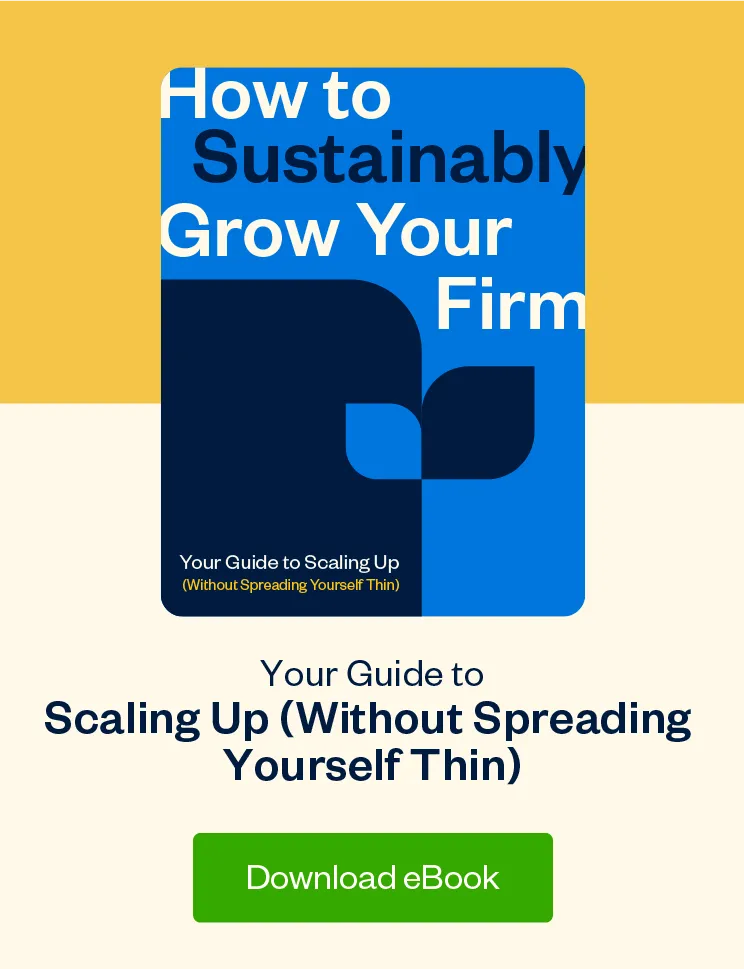Changing accounting software can be a serious disruption for you and your client. How to know when it's worth the risk. Plus, an 8-step data migration checklist to get it done.

Maybe your client has outgrown their existing accounting software. Or perhaps they’re a new client, and you want to get them using the same technology stack your other clients use to make it easier to serve them.
But are the disruption and risk of account migration worth it?
To help you answer that question, we’ll cover when migration makes sense and when it doesn’t. We’ll also provide a migration checklist to make the process as painless as possible.
Table of Contents
Reasons to Migrate Your Clients to New Accounting Software
You and your small business clients might consider migrating existing accounting data to something new for several reasons. Here are some of the most compelling reasons for making the switch.
Better Workflows for Them and You
Switching to a new accounting platform can improve workflows for your clients and your accounting or bookkeeping firm. If your client uses complicated spreadsheets or old, out-of-date systems, switching to the target platform can provide more modern features and capabilities, such as automation, real-time data access, and accounting data analytics. You may be able to help them streamline business operations, reduce manual effort, and save time by eliminating tedious data entry tasks.
Improved Collaboration
Encouraging your clients to migrate from an on-premises system to a cloud-based solution allows multiple users to collaborate on projects from any location without worrying about sharing files, dealing with version control issues, or maintaining hardware infrastructure costs associated with on-premises solutions.
More User-Friendly Software
Migrating to new accounting software can benefit businesses when their existing system isn’t user-friendly. For example, an outdated system, overly complicated software, or a collection of spreadsheets can lead to confusion, low productivity, and costly mistakes. By switching to a more modern platform with up-to-date features and capabilities, your small business clients may be able to solve more of their accounting problems without your intervention.
Scalability
When different clients use different platforms and systems, it’s difficult for you to serve them well. Every client will have unique processes and workflows, which means it takes more time for you to handle their bookkeeping, prepare financial statements, answer questions, and help with business decisions. Getting all of your clients using the same system provides more scalability options than having a unique tech stack for every client.
Reasons NOT to Migrate Your Clients to New Accounting Software
In some cases, it doesn’t make sense to switch platforms, despite potential benefits. Here are some reasons you should think twice before moving data from your client’s current accounting software.
Complexity
Data mapping can be incredibly complex when migrating accounting systems, especially when companies have many accounts or the data structure differs significantly between the old system and the new one.
Any errors introduced during data conversion can be hard to resolve. If you really want to move your client off their current system, consider consolidating and cleaning up their trial balance before embarking on the transfer process.
Timing
When clients are under a time crunch, accounting system migration may not be the best idea. You’ll need to ensure you and your client have time to prepare by sorting through the existing accounts, cleaning up trial balances, and mapping the new system. And you’ll both need to meticulously monitor the process during and after the transition phase to ensure an error-free migration.
Cost
Depending on the size of the company, its complexity, and the quality of the data, the migration process can be expensive. It’s crucial to consider any costs associated with migrating existing data before deciding to switch to a new accounting system.
Note: With FreshBooks, clients on the Select plan get free migration support.
8-Step Accounting Data Migration Checklist
Migrating your client’s accounting data from one platform to another can offer long-term advantages but, in the short-term, requires careful planning and execution to avoid costly mistakes.
Here are some tips for an effective data migration that will help you make the process as smooth as possible.
1. Consolidate and Clean up the Trial Balance
When companies embark on an accounting data transfer, it is important to consolidate and clean up trial balances first. Doing so eliminates any potential errors that may arise due to inaccurate data entry.
2. Agree on a Timeline
It’s good practice to establish a conversion date and work-back schedule for switching over all of your client’s data. A timeline helps you and your client set reasonable goals, which can prevent costly mistakes. It also provides transparency for all parties involved.
The best time of the year to begin a data migration is during the slower seasons, usually late summer or early winter. This ensures that you and your team have ample time to discuss, plan, implement, and troubleshoot any potential issues that may arise.
The best time of the year to begin a data migration is during the slower seasons, usually late summer or early winter.
3. Communicate the Plan to Stakeholders in Advance
When dealing with large amounts of sensitive data, communication is key. To ensure everyone is on the same page and understands the timeline and objectives, communicate the plan to all stakeholders ahead of time—preferably in writing.
This helps avoid any misunderstandings and disagreements that could arise during the transition process, leading to a smoother data migration overall.
4. Do a Data Backup
The most important step in successful data migration happens before the migration process begins: Backing up all your data. A secure backup file is essential. That way, if something does go wrong during the data import, you can quickly recover the original information for your client.
5. Communicate Regularly During the Migration Process
Why does communication appear twice on this checklist? Because it’s that important!
In addition to communicating with your clients ahead of migrating their accounting data, it’s crucial to keep them updated throughout the process.
Check in at regular intervals and provide updates on progress. This will help build trust and a positive client relationship while also ensuring that their accounting data is properly migrated over to the new system.
6. Perform the Migration
This is it! After setting up the migration process, it’s time to actually perform the data transfer. Depending on the complexity of your client’s business or their current system, it may take a few days or even weeks to complete the migration.
For example, if you are migrating from an older legacy system (Microsoft Excel, anyone?), you may need to create a customized program or API (application programming interface) integration in order to accurately transfer all of the necessary data to the new accounting system. On the other hand, if the old accounting system is industry-standard, the process may be simpler and more straightforward.
7. Test for Accuracy
Once the data migration is complete, it’s important to test imported data for accuracy to ensure that everything was properly transferred to the new accounting system and that nothing was lost in the process.
To test for accuracy, you can analyze each record or field individually or use automated testing tools to speed up the process.
8. Provide Training and Ongoing Resources
The final step in a successful data migration project is to ensure your clients are comfortable using the new accounting software.
Create a training program to walk them through your collaborative workflow in the new accounting software. That could be a written manual, a series of videos, or in-person instruction. We also recommend providing a one sheet outlining key features and basic functions.
Make sure to check with your software provider, too. Don’t reinvent the wheel if your accounting software provider already has helpful resources you can share with your clients or adapt to fit your needs.
Get Data Migration Support
Accounting data migration can be complicated; there are a number of factors you need to take into consideration. Use the checklist here as a starting point for making informed decisions for you and your clients.
And don’t forget: When you join the FreshBooks Accounting Partner Program, you can take advantage of free data migration support. It could save you countless hours and be the boost you and your clients need to survive and thrive through the data migration process.

Written by Janet Berry-Johnson, CPA and Freelance Contributor
Posted on June 7, 2023

 5 Ways to Work Better With Your Clients in FreshBooks, for Accountants
5 Ways to Work Better With Your Clients in FreshBooks, for Accountants From Client Management to Client Relationship-Building, for Accountants
From Client Management to Client Relationship-Building, for Accountants Accountants: What Is the Best FreshBooks Plan for Your Client?
Accountants: What Is the Best FreshBooks Plan for Your Client?





